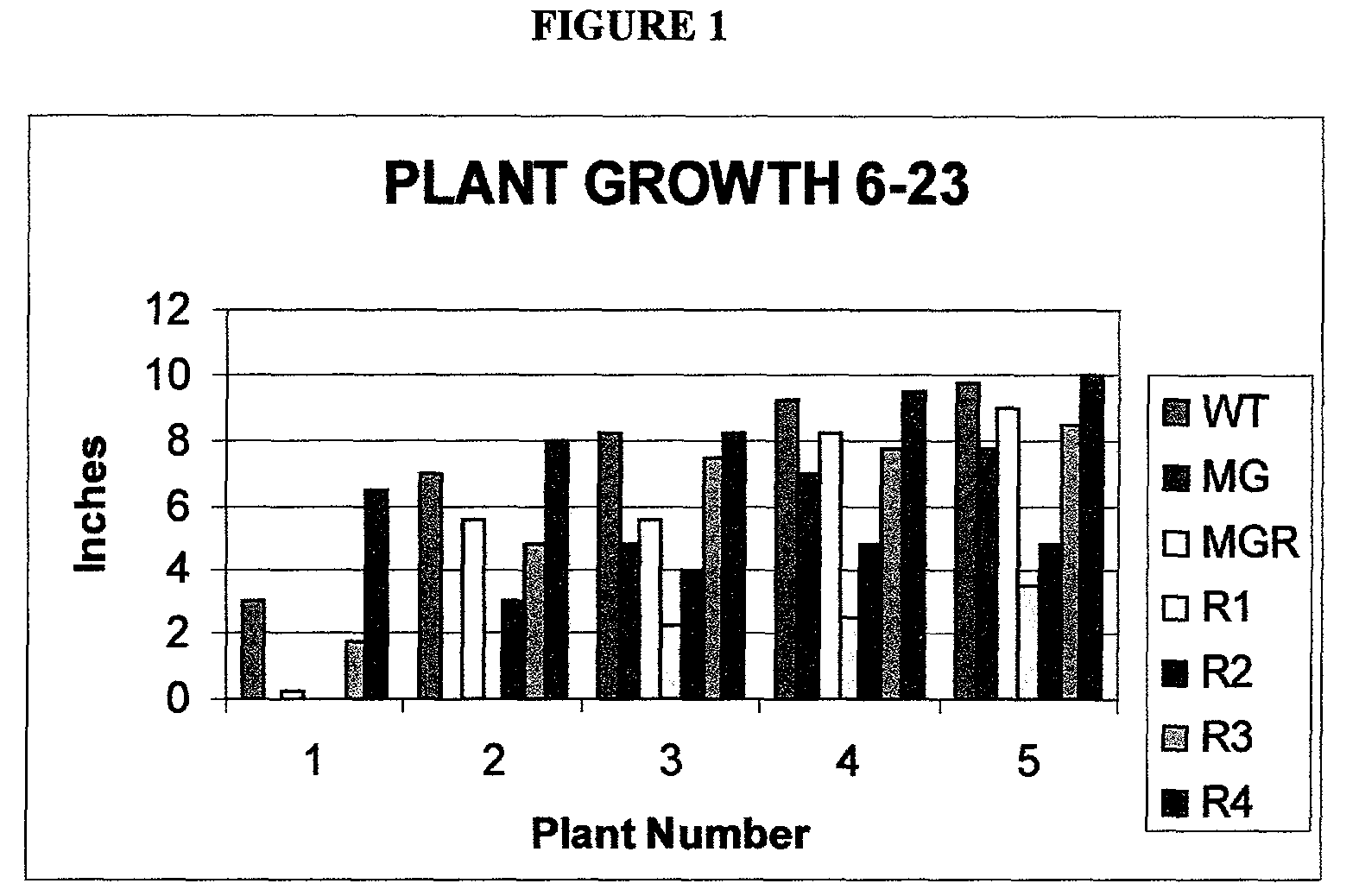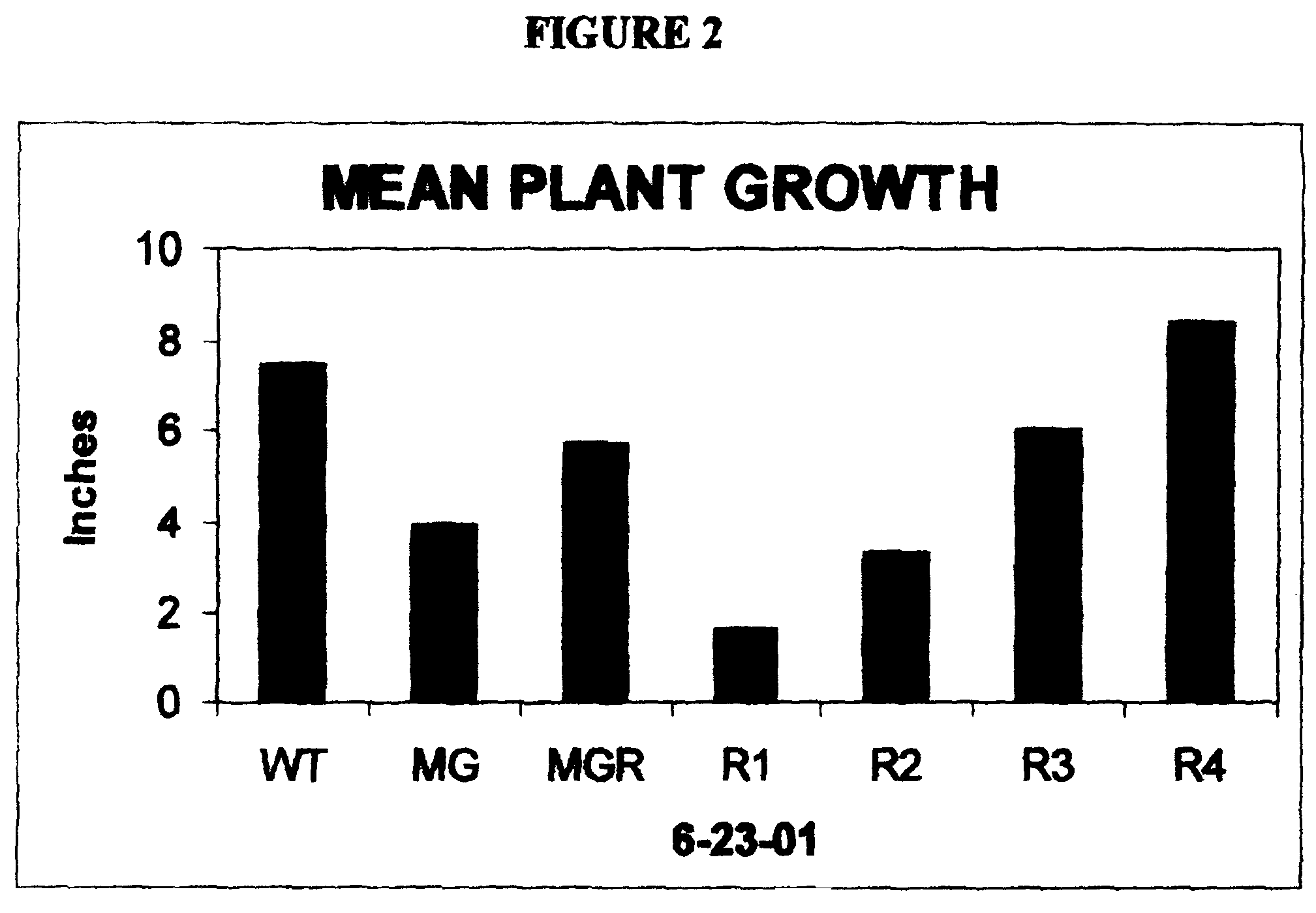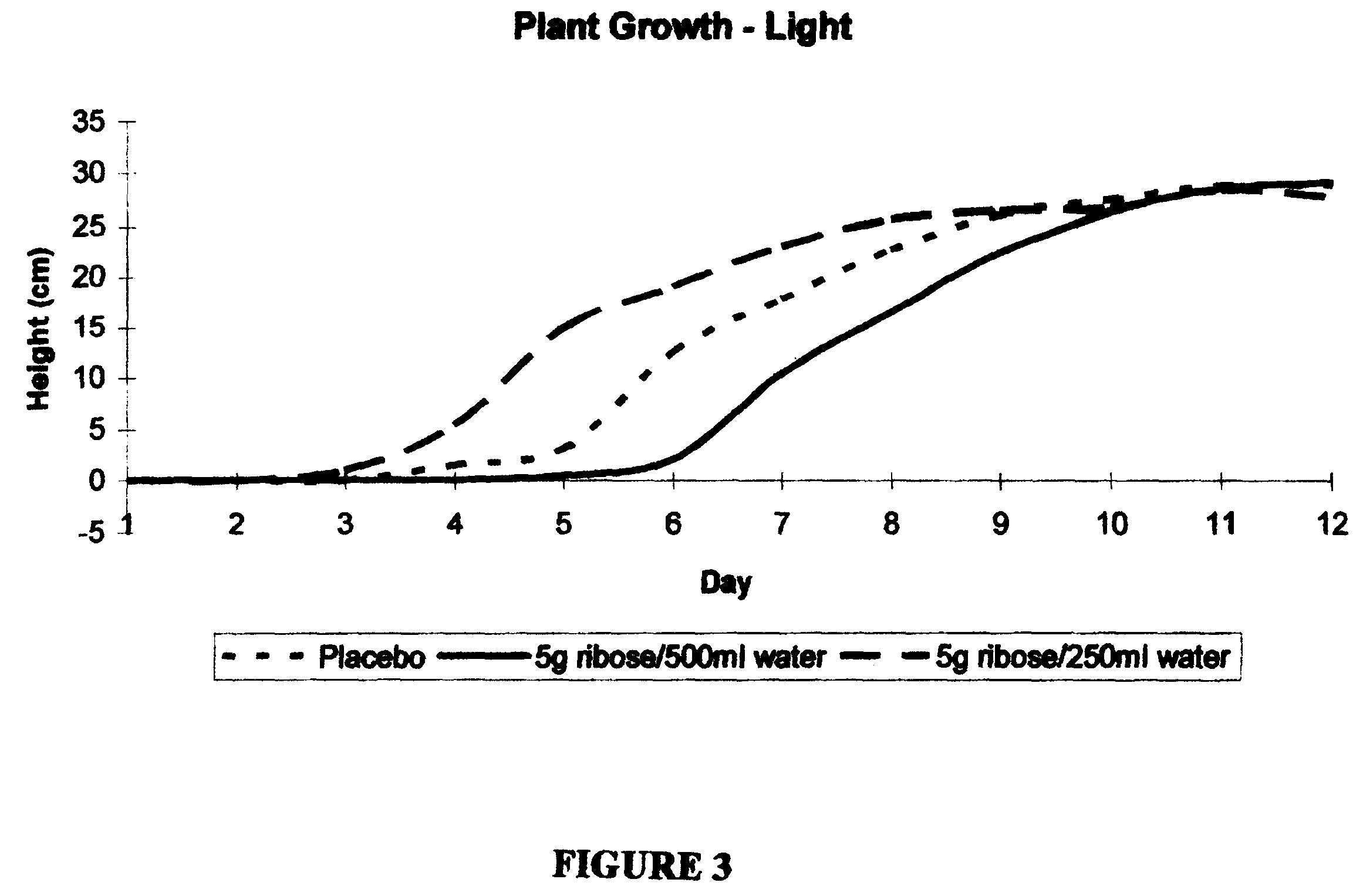Use of ribose to enhance plant growth
a technology of ribose and plant growth, applied in the field of plant treatment methods and compositions, can solve the problems of inability to process, all commercially grown plants (potted plants, shrubs, trees, etc., are exposed to transplant shock, etc., and achieve the effects of enhancing plant growth, yield, hardening, and enhancing plant growth
- Summary
- Abstract
- Description
- Claims
- Application Information
AI Technical Summary
Benefits of technology
Problems solved by technology
Method used
Image
Examples
example 1
Ribose Alone or in Combinations of Other Pentoses, their Derivatives, and Other Fertilizer Components Such as Nitrogen, Phosphorus, or Potassium Aids in the Hardening and Recovery During and Following Transplantation
[0025]Hosta (H. plantaginea grandiflora) plants were transplanted. The protocol was designed such that half of the plants were supplied with water alone and half of the plants received a ribose based solution, in which powdered D-ribose was mixed in water. All plants were transplanted at the same level in the soil and in like soil. All plants were watered at the same times of day, mid-morning and at dusk. Each plant received the same amount of water / watering (½ liter water at each watering). Table 1 represents plant growth data using various feeding combinations. Table 2 represents plant growth data and hardening following transplantation. Results of plant growth data following transplantation are graphically depicted in FIGS. 1 and 2.
example 2
Plant Growth and Yield
[0026]Three different treatments were explored on bean seeds to determine the effects of ribose (at two different doses) on plant growth and proliferation. [The three treatments include control (plain water), a 0.1332 M solution of ribose (5 g D-ribose dissolved in 250 ml water), and a 0.0666 M solution of ribose (5 g D-ribose dissolved in 500 ml water)]. The plants were kept under two different conditions, normal daylight and darkness. A total of six plants will be tested, with the conditions that each plant were tested at listed below.
[0027]
Treatments:Plant 1-5 - placebo, daylightPlant 4 - placebo, darkPlant 6-10 - 0.1332 M ribose, daylightPlant 5 - 0.1332 M ribose, darkPlant 3 - 0.0666 M ribose, daylightPlant 6 - 0.0666 M ribose, dark
[0028]Each seed was planted under identical conditions (soil and pot size) and all at the same time. The environmental conditions (such as temperature and humidity), except for lighting, were kept constant for all the plants. On...
example 3
Root Growth
[0029]Often times when trying to grow new plants, stems are cut from the parent plant and placed in water to grow roots before being put in soil. Variable factors and conditions, such as age of the existing plant, diameter and density of the cut stem, can be responsible for the enhanced root growth in one stem from another. Furthermore, obviously new plants can also be grown from seeds or pods planted in soil. The implantation of a seed into soil stabilizes the above mentioned variability. The development of short, thick roots have been shown to aid in a plant's stability, subsequent growth, and ultimate production from the plant.
[0030]Identical sized pots, containing the same consistency of soil media, were used in assessing root growth. Bean seeds of similar size were chosen. One seed was planted in each pot. The depth in the soil for each seed that was planted was the same. Paired pots (total of 3 pairs, 6 pots), each containing one bean seed, were used. One pair of po...
PUM
| Property | Measurement | Unit |
|---|---|---|
| height | aaaaa | aaaaa |
| weight | aaaaa | aaaaa |
| concentration | aaaaa | aaaaa |
Abstract
Description
Claims
Application Information
 Login to View More
Login to View More - R&D
- Intellectual Property
- Life Sciences
- Materials
- Tech Scout
- Unparalleled Data Quality
- Higher Quality Content
- 60% Fewer Hallucinations
Browse by: Latest US Patents, China's latest patents, Technical Efficacy Thesaurus, Application Domain, Technology Topic, Popular Technical Reports.
© 2025 PatSnap. All rights reserved.Legal|Privacy policy|Modern Slavery Act Transparency Statement|Sitemap|About US| Contact US: help@patsnap.com



